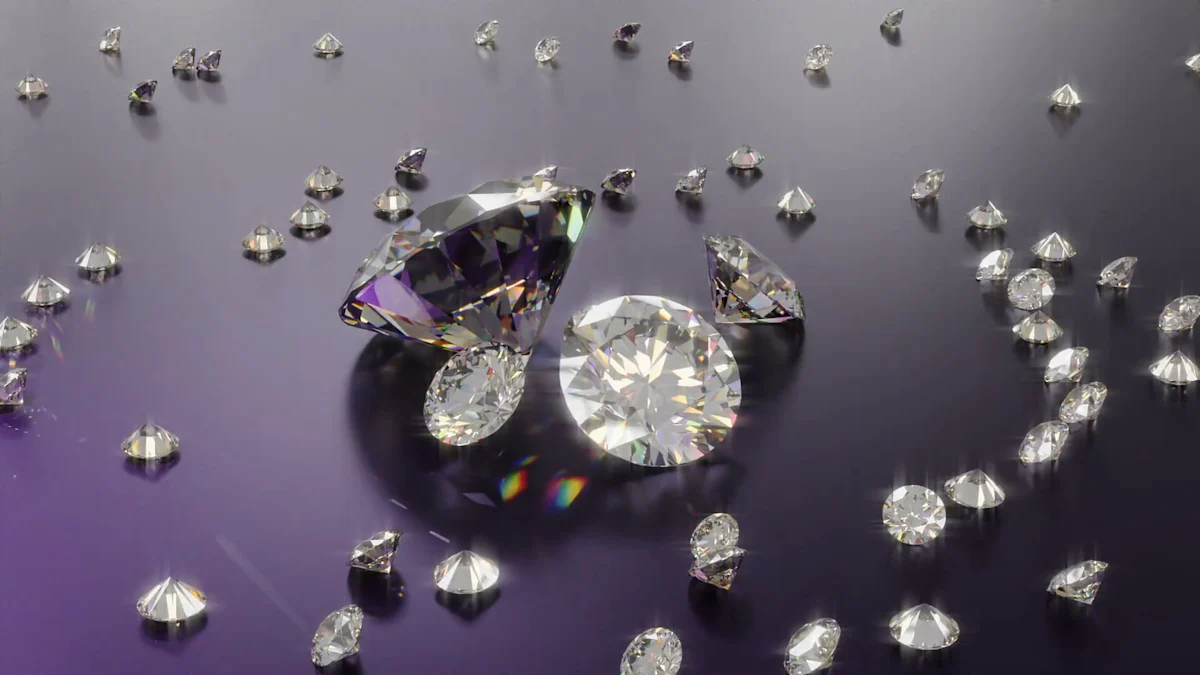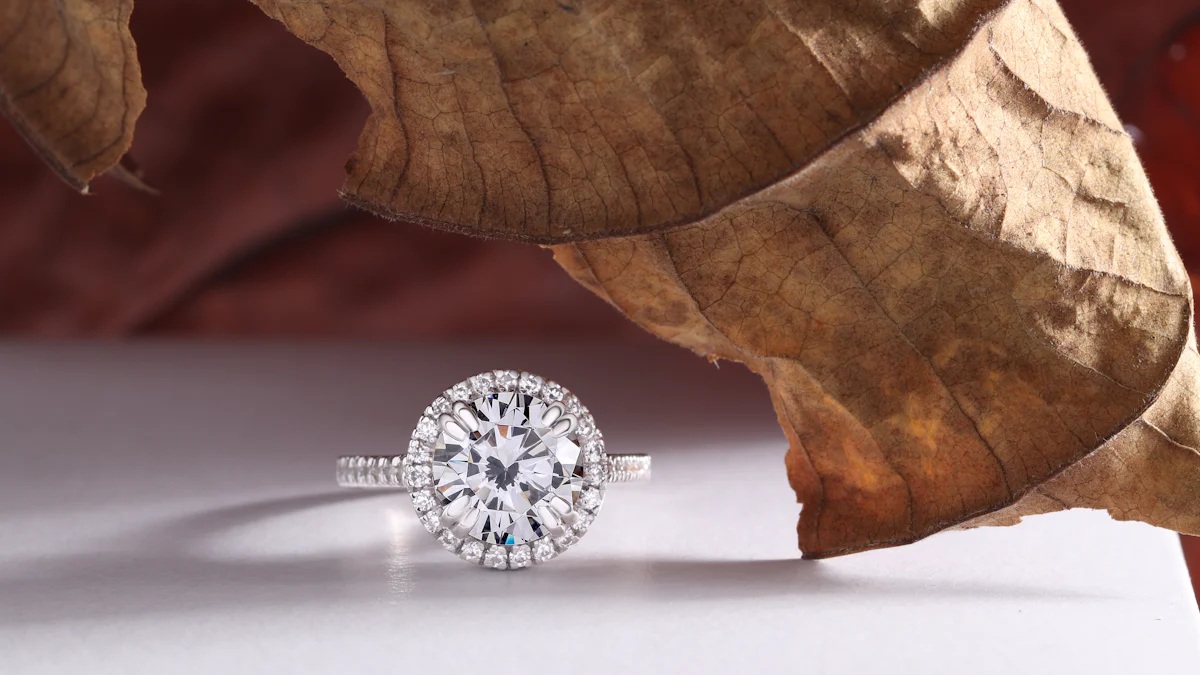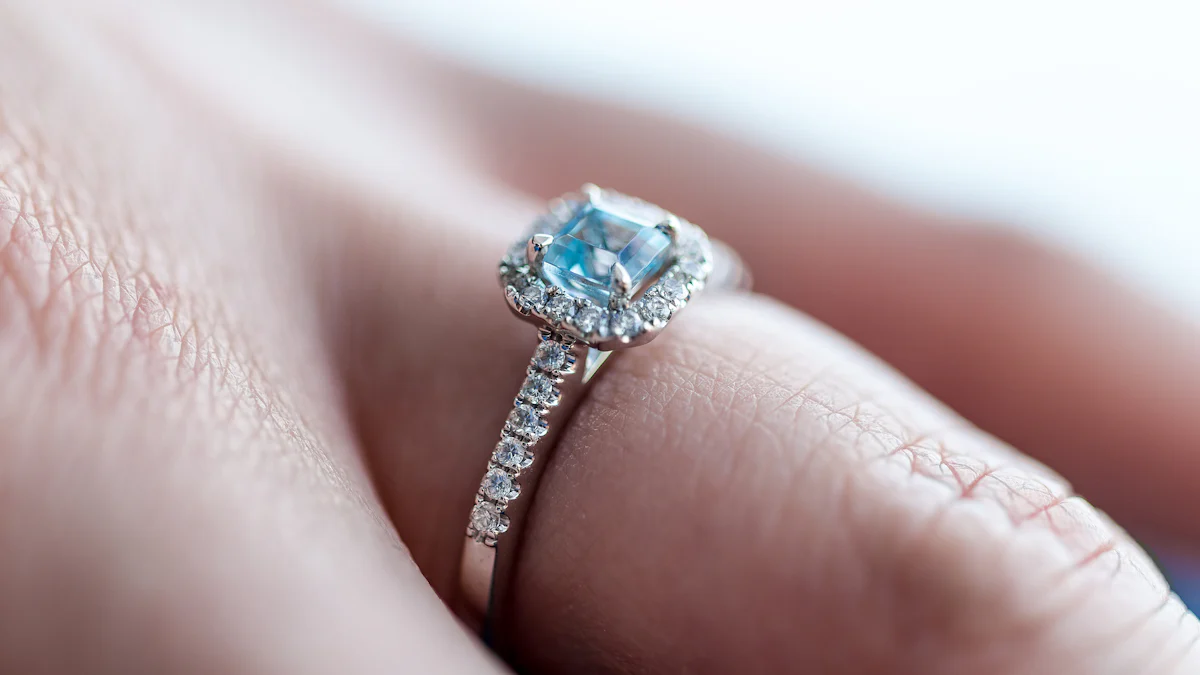How Much Is 1 Carat Diamond in 2025?

If you’re wondering how much is 1 carat diamond in 2025, the answer depends on several factors. The price of a 1-carat diamond typically ranges from $2,000 to $16,000, influenced by its quality, market trends, and where you buy it. Over the past decade, diamond prices have fluctuated. For instance:
- In the last three months, 1 carat natural diamond prices dropped by 5.33%.
- Over six months, prices fell by 13.01%.
- Inventory levels also decreased by 11.64% last month.
Looking ahead, the diamond market is expected to recover. Analysts predict a rise in demand for customized jewelry, especially among Gen Z buyers. As the economy stabilizes, you’ll likely see more options for one carat diamond purchases, whether for a diamond engagement ring or other special occasions.
"The combination of macroeconomic stability, reduced inventory pressures, and continued recovery in bridal demand positions the industry for a strong comeback," says diamond expert Paul Zimnisky.
Understanding these trends can help you make a smart purchase and get the best value for your money.
Price Comparison Across Top Retailers

Blue Nile
Price range for 1 carat diamonds
When shopping at Blue Nile, you’ll find a wide range of prices for a 1 carat diamond. The retail price depends on the diamond’s clarity and color. For example:
| Clarity | Color | Retail Price Range |
|---|---|---|
| SI1 | D | $5,071 |
| VS2 | D | $6,231 |
| VVS1 | E | $7,250 |
| IF | F | $7,003 |
| FL | G | $8,443 |
These prices reflect the high-quality diamonds Blue Nile offers, making it a popular choice for buyers seeking great value.
Key features and unique selling points
Blue Nile stands out for its variety and customization options. You can choose from popular shapes like round, princess, and oval. If you want something unique, you can design your own jewelry using loose diamonds. Many of their engagement rings also feature a halo of smaller diamonds, adding extra sparkle. Whether you’re looking for maximum finger coverage or a classic design, Blue Nile has something for everyone.
James Allen
Price range for 1 carat diamonds
At James Allen, the price of a 1 carat diamond varies widely. Natural diamonds typically cost between $6,800 and $8,500. However, if you’re open to lab-grown diamonds, you’ll find lower prices. On average, a 1 carat diamond costs around $3,711, with prices ranging from $1,245 to $8,643 depending on quality.
Key features and unique selling points
James Allen offers some of the best tools and services in the industry. Their 360° Display Technology lets you view diamonds up close before buying. You also get perks like free shipping, a lifetime warranty, and one free resizing within 60 days. They even provide free engraving and cleaning services every six months. If you’re looking for a custom design, James Allen makes it easy to create a ring that’s truly one of a kind.
Brilliant Earth
Price range for 1 carat diamonds
Brilliant Earth offers competitive pricing for 1 carat diamonds, though specific prices depend on clarity and color grades. In January 2025, the market for round diamonds in the 1.00–1.19 carat range showed nuanced shifts. While exact figures aren’t available, Brilliant Earth remains a strong contender for buyers seeking ethical and sustainable options.
Key features and unique selling points
Brilliant Earth is known for its commitment to sustainability. They offer ethically sourced diamonds and lab-grown options, making them a favorite among eco-conscious buyers. Their designs often feature vintage-inspired settings and unique details, perfect for those who want something different.
Factors Influencing the Price of a 1-Carat Diamond in 2025

Quality (4Cs: Cut, Color, Clarity, Carat)
How each of the 4Cs impacts pricing
When it comes to the price of a 1 carat diamond, the 4Cs—Cut, Color, Clarity, and Carat—play a huge role. Each factor affects the diamond’s value differently. Here’s a quick breakdown:
| 4C | Impact on Price |
|---|---|
| Cut | A well-cut diamond sparkles more, making it more desirable and expensive. |
| Color | Diamonds closer to colorless (D grade) are rarer and cost more than those with noticeable hues. |
| Clarity | Fewer flaws mean higher pricing. Diamonds with fewer inclusions are more valuable. |
| Carat | Larger carat weights increase the price, but the cut can make a smaller diamond appear bigger. |
Understanding these factors helps you see why some diamonds cost more than others.
Importance of balancing quality and budget
Balancing quality and budget is key when buying a one carat diamond. Here’s how you can do it:
- Set a budget first to avoid overspending.
- Focus on the diamond’s cut. A high-quality cut enhances brilliance, even if the diamond has lower clarity or color grades.
- Consider budget-friendly options like slightly lower clarity or color grades. They still look stunning but cost less.
By prioritizing what matters most to you, you can find a diamond that offers great value without breaking the bank.
Market Trends and Economic Factors
Impact of global diamond supply and demand
Global supply and demand heavily influence diamond pricing. In 2025, several trends are shaping the market:
- Demand for diamonds remains strong in countries like the U.S. and China.
- Supply chain issues, stricter mining regulations, and geopolitical tensions are limiting diamond availability.
- High-quality diamonds continue to hold their value, even as supply decreases.
These factors suggest that the price of a one carat diamond may rise as demand outpaces supply.
Influence of inflation and economic conditions
Economic conditions also play a big role in diamond pricing. Inflation, for example, drives up costs because diamonds are seen as stable investments. Here’s what’s happening in 2025:
- Rising operational costs in mining are pushing retail prices higher.
- Inflation has led to increased interest in tangible assets like diamonds.
- Despite economic challenges, demand for diamonds remains steady, especially in luxury markets.
If you’re planning to buy a diamond, understanding these trends can help you make a smart decision.
Retailer Markups and Policies
Differences in pricing strategies among retailers
Retailers use different strategies to set their prices. Local jewelers often mark up diamonds by 30% to 40% to cover overhead costs. Online sellers, on the other hand, usually have lower markups—around 10% to 15%. This means you might find better deals online, especially for unmounted diamonds.
Role of warranties, return policies, and branding
Retailer policies also affect pricing. Stores that offer lifetime warranties, free resizing, or generous return policies may charge more. Branding plays a role too. Well-known retailers often price their diamonds higher because of their reputation. While these extras add to the cost, they can also provide peace of mind.
By comparing retailers and understanding their pricing strategies, you can find the best value for your one carat diamond.
Tips for Buying a 1 Carat Diamond in 2025
How to Compare Prices Effectively
Using online tools and resources
When comparing the price of a 1 carat diamond, online tools can be your best friend. Platforms like PriceScope let you search and compare thousands of diamonds in real time. You’ll also find expert advice and forums where you can ask questions. These resources help you understand the market and avoid overpaying. By using these tools, you can confidently evaluate the cost and value of your potential purchase.
Visiting multiple retailers for quotes
Don’t settle for the first price you see. Visit several retailers, both online and in-store, to get quotes. This gives you a clearer picture of the market. Local jewelers might offer personalized service, while online stores often have lower markups. Comparing options ensures you find the best deal for your engagement ring or diamond ring.
Understanding Certification and Authenticity
Importance of GIA or AGS certification
Certification is crucial when buying a diamond. Here’s why:
- Skipping certification could mean overpaying for a lower-quality stone.
- Trusted labs like GIA and AGS ensure accurate grading, unlike lesser-known labs.
- Certification confirms the diamond’s quality, making resale and insurance easier.
Think of certification as the diamond’s passport. It guarantees you’re getting what you pay for.
How to verify a diamond’s authenticity
You can check a diamond’s authenticity with simple tests:
- Use a magnifying glass to spot inclusions. A flawless stone might be fake.
- Try the fog test. Real diamonds won’t hold fog for more than three seconds.
- Shine a UV light. Genuine diamonds often glow blue.
For absolute certainty, consult a gemologist or use a diamond tester. These steps ensure your diamond buying guide leads to a genuine purchase.
Negotiation and Discounts
Strategies for negotiating with retailers
Negotiating can save you money. Start by researching the market to understand pricing. Use online prices as leverage when talking to local jewelers. Highlight competitive offers to encourage better deals. Building a good relationship with the jeweler can also lead to discounts.
Taking advantage of seasonal sales and promotions
Timing matters. Retailers often run promotions during holidays or bridal seasons. Keep an eye out for these sales to snag a great deal. Lab-grown diamonds, which are more affordable, might also go on sale. Planning your purchase around these events can maximize your savings.
The price of a 1 carat diamond in 2025 ranges from $2,000 to $16,000. This wide range depends on factors like quality, market trends, and retailer policies. To make a smart purchase, you need to focus on the 4Cs—cut, color, clarity, and carat. Prioritize cut for brilliance and balance the other factors to fit your budget.
Take time to compare prices across retailers. Use tools to research options and verify certification from trusted labs like GIA. Ethical sourcing is also important. Look for conflict-free diamonds to ensure responsible practices.
Here’s a quick breakdown of key steps to guide your purchase:
| Action Step | Primary Benefit | Long-term Impact |
|---|---|---|
| Research and Compare Options | Smarter decision-making, better pricing | Avoid overpaying, maximize value |
| Verify Certification | Confirms quality and authenticity | Protects your investment |
| Check Ethical Sourcing | Ensures responsible practices | Provides peace of mind |
| Consider Future Value | Safeguards investment potential | Better resale opportunities |
By following these steps, you can get the best value for your diamond. Always prioritize certified diamonds and explore negotiation opportunities to save money.
FAQ
What is the best way to get value when buying a diamond?
You should focus on the 4Cs, especially the cut, as it impacts brilliance the most. Compare prices across retailers and use online diamond shopping tools to find competitive deals. Always check for certification to ensure quality and authenticity.
Are lab-grown diamonds a good option?
Yes, lab-grown diamonds offer excellent value. They’re more affordable than natural diamonds and have the same physical and chemical properties. Plus, they’re an ethical choice if sustainability matters to you.
How can I tell if a diamond is real?
You can try simple tests like the fog test or use a magnifying glass to check for inclusions. For absolute certainty, consult a gemologist or use a diamond tester. Certification from trusted labs also confirms authenticity.
Why do diamond prices vary so much?
Prices depend on quality (the 4Cs), market trends, and retailer markups. Online stores often have lower prices due to reduced overhead costs. Retailer policies, like warranties and branding, also affect pricing.
Is it better to buy diamonds online or in-store?
Online diamond shopping often provides better value due to lower markups. You can also access a wider selection and use tools to compare options. However, in-store purchases offer personalized service and the chance to see the diamond in person.
See Also
Understanding The Cost Of A 2 Carat Lab Diamond
Exploring The Price Of A 3 Carat Lab Diamond
Comparative Analysis Of Prices For Diamond Rings

